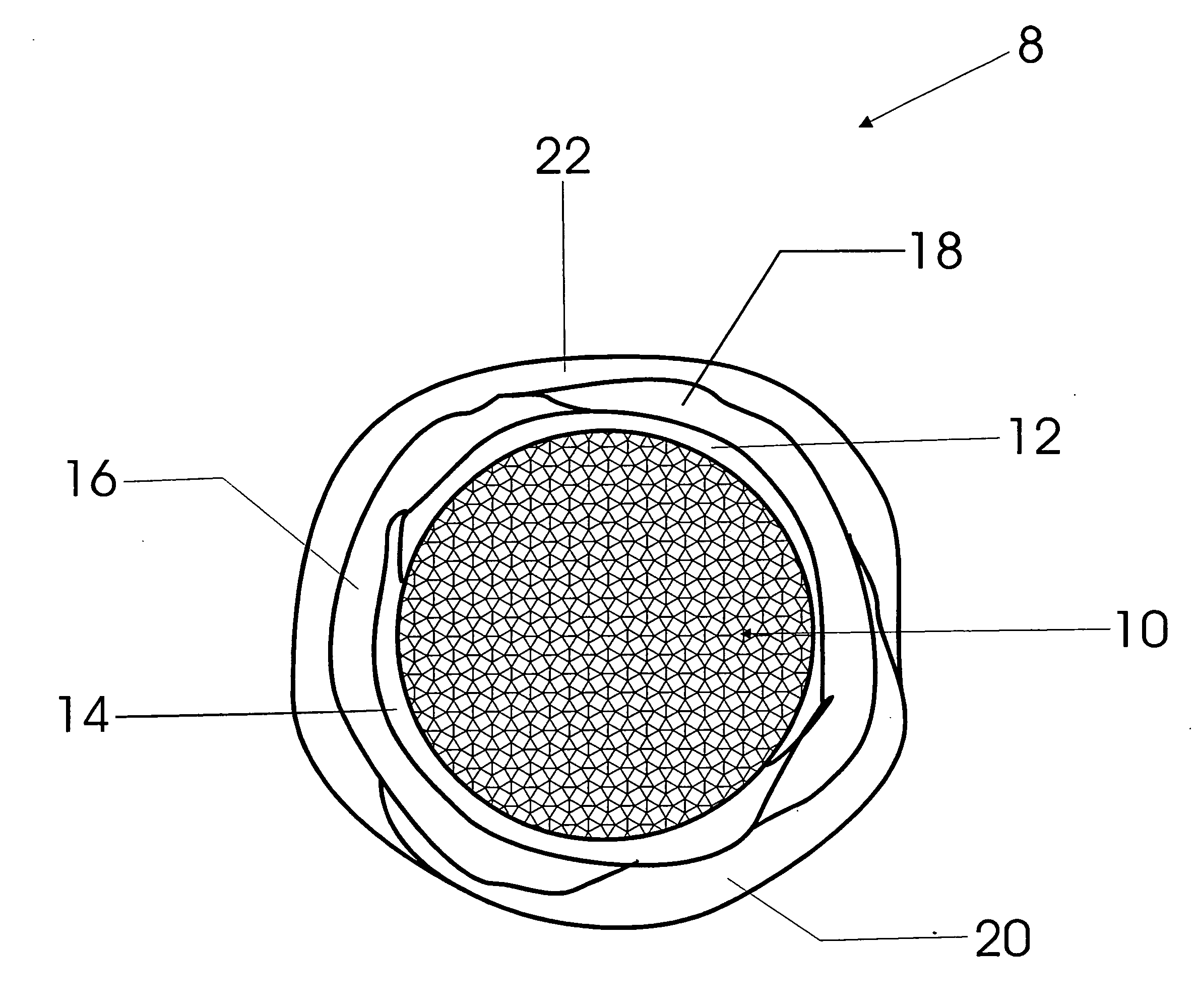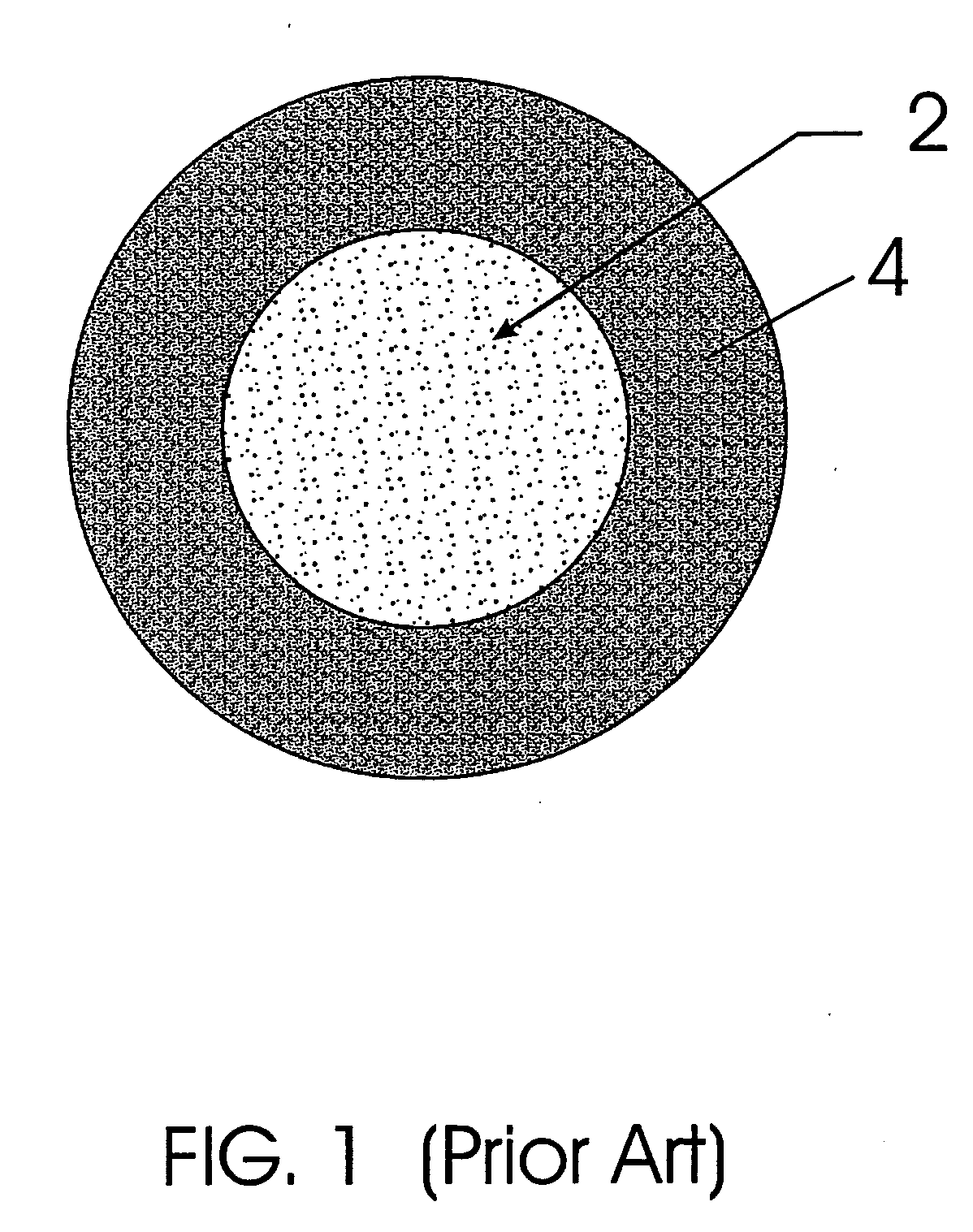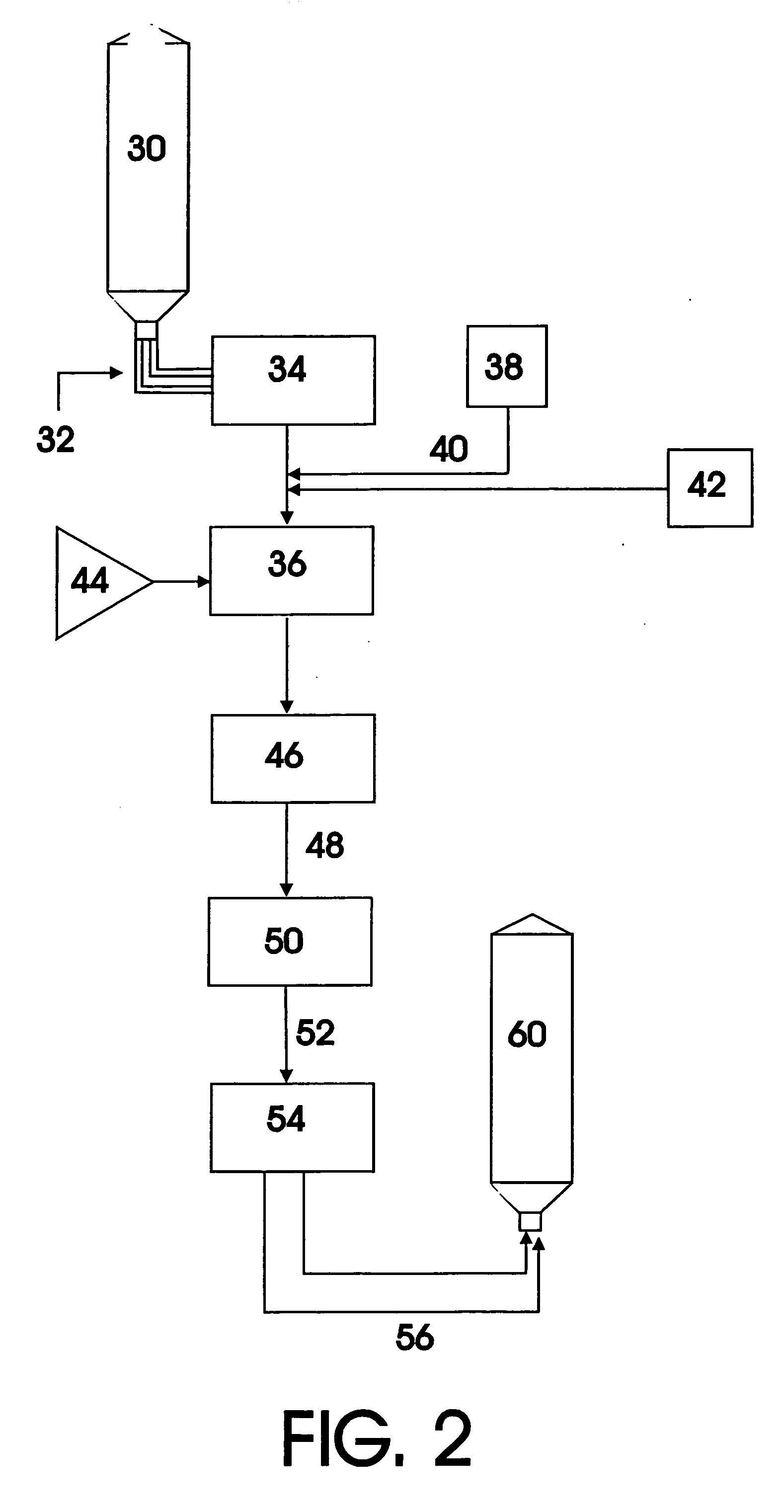Process for incremental coating of proppants for hydraulic fracturing and proppants produced therefrom
a technology of hydraulic fracturing and proppants, applied in the field of coating particles, can solve the problems of high energy and production costs, severe drop in permeability, and inability to use glass beads alone, and achieve the effect of degree of curability
- Summary
- Abstract
- Description
- Claims
- Application Information
AI Technical Summary
Benefits of technology
Problems solved by technology
Method used
Image
Examples
example 1
Preparation of Precured Reinforced Incremental Partial Microlaver Particles (PRIMP)
[0121] Silica sand (25 lbs; 11,325 g), 20 / 35 mesh, was charged to a heater and heated to a temperature of between 400° F. (204° C.) and 425° F. (218° C.). The heated sand was then charged over a period of 10 seconds to a Beardsley & Piper (Aurora, Ill.) custom built Speedmullor (mill) designed for high-speed ‘Hot Process’ coating processes, operating at a rotor tip speed of 150 rpm. Simultaneously, 0.1% by weight of solvent-dispersed organofunctionalized silane was added by spray injector positioned in front of the primary mulling wheel of the Speedmullor in order to ensure maximal mixing.
[0122] Following the completion of sand addition to the mill, a 1.0 second pulse addition of powdered GP2202 Novolak resin was added into the mill to a total weight of 20.0 grams. Injection was via a pressurized Nordson Sure Coat system (Westlake, Ohio), utilizing a fine grade ceramic nozzle tip positioned in front...
example 2
Pilot Plant Manufacture of Curable Reinforced Partial Microlaver Proppant (CRIMP)
[0125] Silica sand (25 lbs; 11,325 g), 20 / 35 mesh, was charged to a heater and heated to a temperature of between 375° F. (191° C.) and 400° F. (204° C). The heated sand was then charged over a period of 10 seconds to a Beardsley & Piper (Aurora, Ill.) custom built Speedmullor designed for high-speed ‘Hot Process’ coating processes, operating at a rotor tip speed of 150 rpm.
[0126] Following complete addition of the sand to the mill, a 2.0 second pulse addition of powdered GP2202 Novolak resin incorporated with 0.2% added organoflnctional silane in a solvent was added into the mill to a total weight of 40 grams. Injection was via a pressurized Nordson Sure Coat system utilizing a fine grade ceramic nozzle tip positioned in front of the primary mulling wheel of the mill. At 1.75 seconds into the resin addition cycle, 5.2 grams of hexamethylenetetramine in solution was added via nozzle injector in a 2.0 ...
example 3
Pilot Plant Manufacture of Encapsulated Reinforced Partial Microlayer Proppant CRIMP)
[0130] Silica sand (25 lbs; 11,325 g), 20 / 35 mesh, was charged to a heater and heated to a temperature of between 375° F. (191° C.) and 400° F. (204° C.). The heated sand was then charged over a period of 10 seconds to a Beardsley & Piper (Aurora, Ill.) custom built Speedmullor (mixer) designed for high-speed ‘Hot Process’ coating processes, operating at a rotor tip speed of 150 rpm.
[0131] Following complete addition of the sand to the mill, a 2.0 second pulse addition of powdered GP2202 Novolak resin (Georgia-Pacific Resins, Inc., Atlanta, Ga.) incorporated with 0.2% added organofunctional silane in a solvent was added into the mill to a total weight of 40 grams. Injection was via a pressurized Nordson Sure Coat system utilizing a fine grade glass-filled Teflon® nozzle tip positioned in front of the primary mulling wheel of the mill. At 1.75 seconds into the resin addition cycle, 5.2 grams of hex...
PUM
| Property | Measurement | Unit |
|---|---|---|
| temperature | aaaaa | aaaaa |
| temperature | aaaaa | aaaaa |
| temperature | aaaaa | aaaaa |
Abstract
Description
Claims
Application Information
 Login to View More
Login to View More - R&D
- Intellectual Property
- Life Sciences
- Materials
- Tech Scout
- Unparalleled Data Quality
- Higher Quality Content
- 60% Fewer Hallucinations
Browse by: Latest US Patents, China's latest patents, Technical Efficacy Thesaurus, Application Domain, Technology Topic, Popular Technical Reports.
© 2025 PatSnap. All rights reserved.Legal|Privacy policy|Modern Slavery Act Transparency Statement|Sitemap|About US| Contact US: help@patsnap.com



